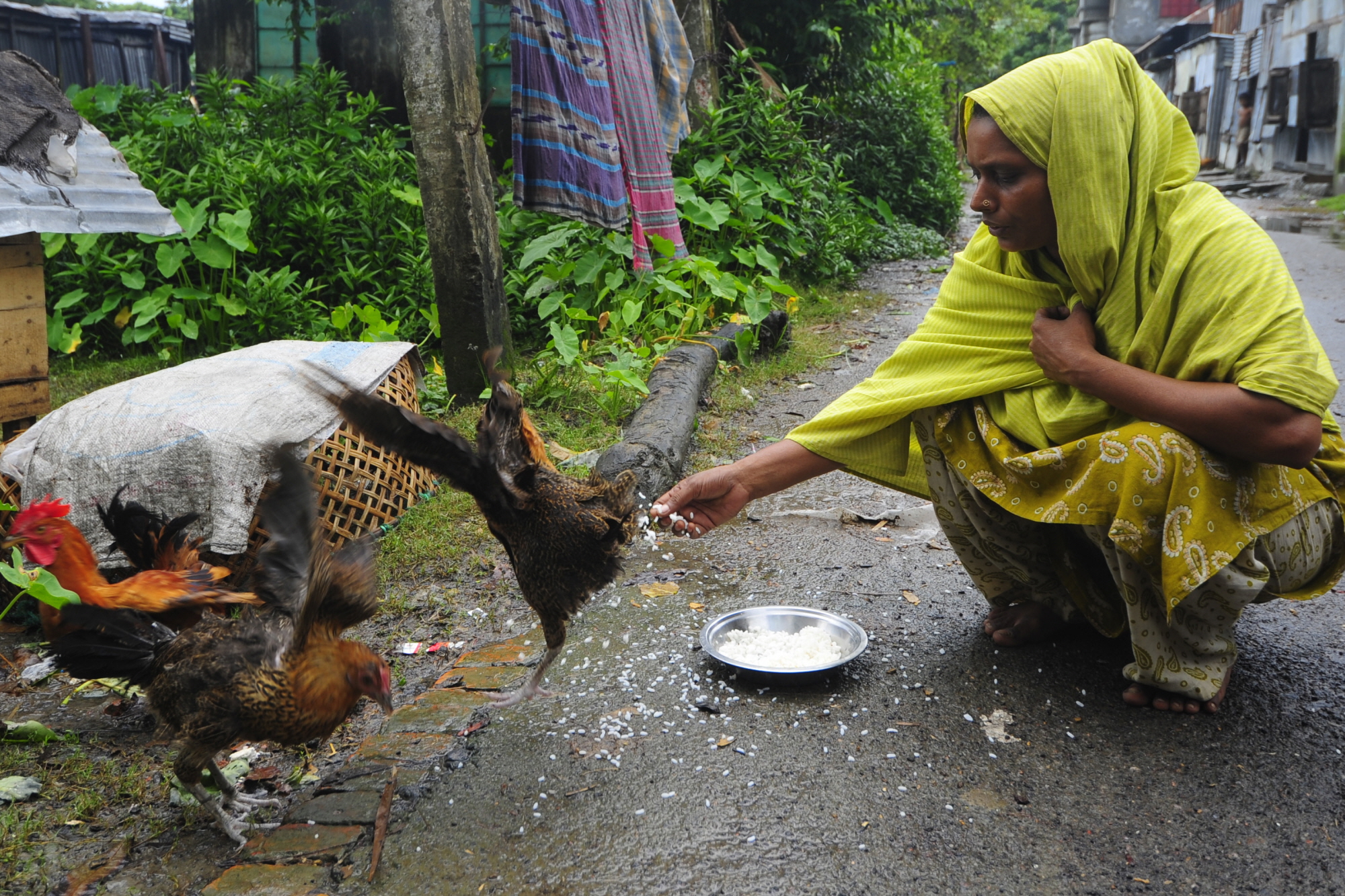Boosting incomes of Bangladesh’s rural poor

Barisal and Khulna, Bangladesh – Shefali Rani, a Bangladeshi woman in her fifties, dreams of starting her own paper bag making business one day. And it is her pregnant goat – her sole asset – that holds the key to that dream, she says.
“I hope to sell one of the kid goats when it gets a little older and use that money to get a business going,” she said. “Then I can fix my house.”
Like many Bangladeshis in the country’s southern coastal belt, Shefali Rani lost nearly everything to Cyclone Sidr three years ago.
The storm flattened her family’s home along the river embankment, killed their livestock and swept away most of their meagre belongings.
Her husband, a shop owner, became ill shortly after, only to die when another massive cyclone – Cyclone Aila – ripped through the country two years later.
Today she and her 12-year-old daughter sleep on a narrow wooden platform, alongside their goat, in a shack cobbled together with pieces of corrugated metal, wood and plastic sheeting. Gaping holes do little to keep the rains out and safety is a constant concern.
Cyclone devastation
Cyclone Sidr, which followed closely on the heels of two severe monsoon floods, affected over eight million people, many of them landless labourers and marginal farmers with less than 0.2 hectares of land.
The storm damaged 1.5 million homes, uprooted around 4 million trees, killed off livestock, destroyed fishing boats, nets and fish stocks, and wiped out a good portion of the soon-to-be-harvested aman rice, the region’s main staple.
It also wiped out people’s main means of making a living – and this at a time when food and fuel prices were beginning to soar.
Back on their feet
As part of an emergency project, FAO provided nearly 10 000 of the poorest and most vulnerable households – those living on river and canal embankments – with fishing boats and gear, chickens, ducks and goats and tree seedlings to help them get back on their feet as quickly as possible.
Khadiza Akhter, 28, who has no land of her own, earns a steady income thanks to chickens received from FAO. The money she pulls in, mainly from hatching the eggs and selling the live birds, allows her to keep her young children in school.
“My children are eating healthier food now – spinach, potatoes, rice, dhal and even fish once a month,” said the mother of five, who used to scrape by on part-time jobs pounding out rice for snacks, while her husband spends months on a deep-sea fishing boat. “I’m now able to save about 100 taka (USD 1.50) each month after expenses and I don’t have to look for work outside the house.”
Long-term focus
FAO is expanding its investment assistance activities and reaching out to many more households via a four-year USD 16 million agricultural project to revitalise crop, livestock and fishery production in Barisal and Khulna – two southern districts hit hard by Cyclone Sidr.
It is part of a broader USD 109 million World Bank-financed project aimed at restoring livelihoods, rehabilitating and upgrading coastal embankments, building new shelters and strengthening disaster risk management in the south’s cyclone-prone areas.
And it is fully in line with the Government’s efforts to “build back better” and turn the southern coastal belt into the country’s bread basket.
Boosting incomes and resilience
Around 40 percent of Bangladesh’s nearly 160 million people live below the poverty line. Many are unable to afford the food they need. Malnutrition rates are among the highest in the world.
The push to intensify and diversify agricultural production in the southern delta, through the better use of technology and improved agricultural practices, will help boost people’s incomes and diets.
This, along with better water and embankment management, will help prevent the rural poor from being completely blindsided by the next disaster – important in a country increasingly faced with erratic monsoon rains, cyclones, rising sea levels and drought.
“It’s extreme when it rains and extreme when it’s dry,” said Abdul Mannan, a 70-year-old rice farmer who has lost crop land to encroaching sea water and salinity over the years – a phenomenon affecting many in this area.
New technologies and training key
To help farmers get the most from their land, especially during the dry boro season, FAO is working to introduce new crop varieties, such as saline- and stress-tolerant seeds, as well as modern machinery like power tillers, threshers, dryers and irrigation pumps.
It is also focusing on increasing surface water irrigation – or flood irrigation – and encouraging farmers to plant higher-value crops like fruit trees, vegetables, oil crops and mung beans.
Likewise, FAO is providing improved fishing boats, nets and safety equipment, supporting sustainable fishing practices and strengthening livestock management and production.
Helping producers form community-based groups and marketing organisations will ensure sustained access to inputs and stronger bargaining power.
While technical training on diversifying production, minimising post-harvest losses and increasing the value and consumer appeal of their goods will help put the producers on a path to a more secure future.
“Around the time of the religious feast, Eid-al-Adha (‘Festival of Sacrifice’), goats can go for up to 10 000 taka each (USD 143),” said Abu Sayeed Mia, a livestock production specialist with FAO Bangladesh. “If we can train women to raise their goats using better feed, vaccinations and shelter and wait to sell them in time for Eid, with two or three goats they can make 20,000-30,000 taka and that’s good money.”
Slideshow: Increasing farmers' resilience in Bangladesh amid increasing climate threats
